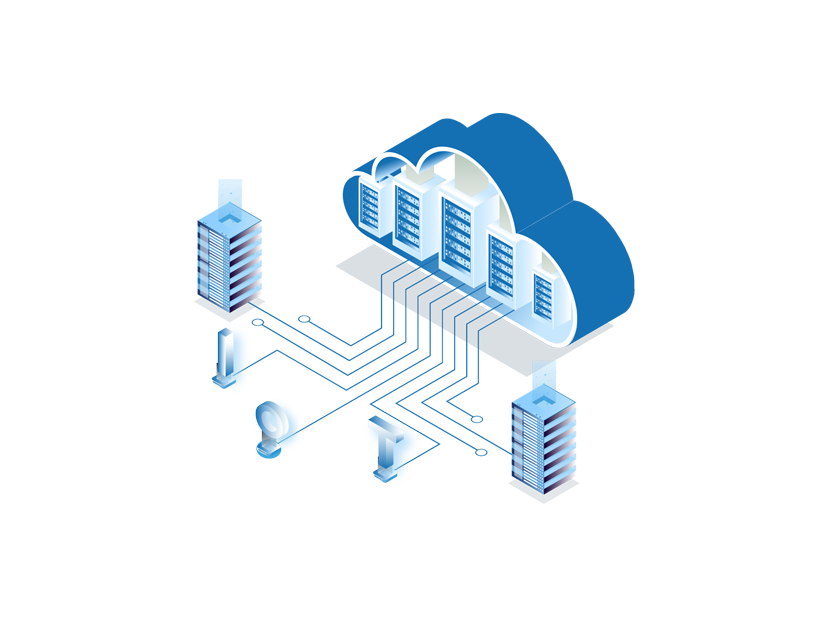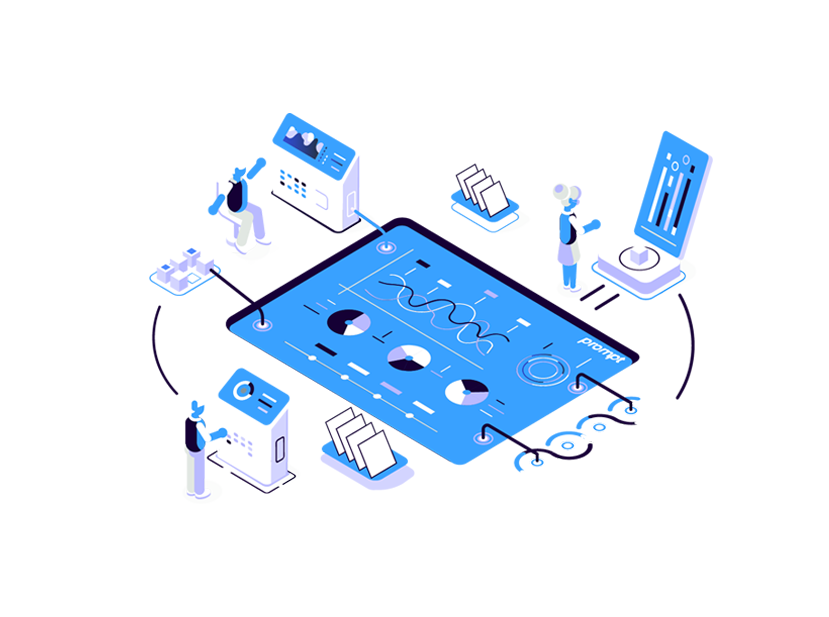Today, when time has become the most precious thing than ever, everyone is searching for the most efficient and smart solutions. Just assume present life without internet. There would have been no way to connect and use kitchen appliances, TV sets and baby monitors etc. remotely. Life would have been hard. Thankfully we are existing in an era where our physical world is beautifully synchronizing with the digital world. It is expected that by 2025, we have more connected devices than Earth’s inhabitants.
Do you know how all this is possible? The only way to make all this possible is through the Internet of Things. We can simply define it as IoT refers to an ecosystem which includes physical objects accessed by the internet.
But why do you need to integrate your mobile application with IoT? Integrating IoT with a mobile application can provide a competitive edge to your business to thrive in any dynamic market.
For example, heart monitoring devices have built-in sensors with an IP address and can collect and transmit data over the network. They are built to monitor, understand and analyze the ambience as per human needs.
Amazon’s Alexa and Google Assistance is already serving as a connecting link between human and network of interconnected devices and have been in user from a long time. The transformation in technology shows that IoT has become one of the most critical technologies of today’s century. Businesses belonging to different domains are employing the latest technology to sustain in tech competition.
How IoT and Mobile App Development is interdependent:
Today, millions of IoT connected devices are already part of the earth. No doubt with the time the number will increase as internet connectivity is now a standard feature for devices which are used in factories, households, businesses and other sectors.
The preferred platform which has pushed the usage of IoT and IoT based devices is Mobile. The mobile app is easy to develop and for transmitting data. Using a single mobile application, you can quickly and efficiently manage IoT devices like Smart home or wearables.
In fact, you can set thermostats, brew your coffee and peep inside your house using the camera from the remote place through mobile phones. So, life has become very comfortables through IoT.
Why do you need to develop a Custom Mobile App using IoT?
1) Flexible Accessibility:
Today people are addicted to easy accessibility; therefore, integration of IoT and mobile app provides this facility, i.e. to access any interconnected physical object from any location through a single touch on a smartphone. Your reliable and proficient IoT app development company can provide you IoT-enabled mobile app, which can compute with IoT platforms’ enhanced functionality and can boost network usage of the customers.
2) Valuable Insights:
The Internet of Things can be defined as a network of interconnected devices, sensors, digital items and servers that collectively access and store sensitive and personal data of the users. These data can be used to make accurate decisions related to consumer behaviours and activities and shopping patterns in real-time, ultimately improving business operations.
For example, you can execute an essential change in inventory and improve your offerings’ marketing strategy. By using data, you can provide highly customized and excellent customer experience.
3) Market Entry:
We all know that IoT provides innumerable benefits, but unfortunately, many businesses and organizations are not in favour of adopting IoT as well as new technologies. They are unaware of IoT potentials and how a custom mobile app with IoT can provide a competitive edge to their business and address the niche market that has adopted IoT-based mobile apps.
How IoT helps in Mobile App Development Process?
1) Reduces the Cost of Mobile App Development:
IoT being dynamic in nature allows IoT app development company to combine multiple components within the app to make it innovative as well as interactive. This feature saves a lot of money without any compromise with the result.
2) Easy Integration:
IoT technology can be integrated with emerging technologies like AR, ML and VR. This means that it allows you to deploy the same capabilities in mobile apps. But, in order to get the best result, one has to implement IoT correctly.
3) Need for Higher Security:
We all know that user’s data is stored on the cloud and IoT application developers provide extreme device interconnectivity which certainly attracts high possibilities of cyberattacks and account hacks. Thus mobile app development service providers must ensure high-security protocols and encryption policies in all IoT integrated mobile apps.
4) Promotes Interactive Mobile App:
Technology has opened the gateway to personalization option, and obviously, IoT has made the mobile app more interactive and efficient. This concludes that a mobile app can stay-up-to-date with functionalities of IoT to stay competitive. This latest technology also facilitates simple customization options for mobile enterprise apps as today many businesses wish to reap the leverages provided by IoT. Many organization have connected devices for various operations like ordering supplies or in-office repairs regularly.
Businesses can even make their work process smooth for their staff by reducing downtime of office equipment by regular maintenance and prompt repair services.
5) Location Independence:
Most of the mobile users are using IoT-based mobile apps. Users can control the IoT ecosystem, including all devices, internet connections, hardware deployed through IoT-based mobile apps from anywhere and anytime. Thus we can say that IoT facilitates location independence.
For example, iPhone’s Home App provides useful automation for home accessories like a thermostat, lights, bathroom, wifi system. Homekit cameras and videos can even inform you through notification if any friend arrives at your doorstep. Thus you are free to operate your devices from any location using your mobile app.
6) Greater Convenience:
Today 52% of the world are mobile internet users, and one can easily manage entire IoT network from office, home or anywhere. One can even integrate social networks and notifications in the IoT mobile application. IoT has made life easy and simple, not just for users but also for IoT service providers. Today, application developers are not required to invest a lot of time, money and resources to make a mobile app and devices intuitive and interactive.
What are the challenges in IoT enabled Mobile App Development?
1) Data Collection and Processing:
IoT application needs a massive amount of data so IoT app development company must collect, store & process data on the cloud, in full agreement with platform terms. Companies need assistance for fetching insights from the customers’ data, so they have to hire data experts, analytic engineers and machine learning resources to analyze the data quality and its usefulness.
2) Security and Privacy:
Well, IoT has been in controversies for network security and data security. IoT app developers need to ensure full data privacy and security. They should provide data encryption protocol while developing a mobile app because IoT devices can be easily tampered and hacked by hackers. Therefore IoT app developers must guarantee that both data and devices are safe and hold required access and support skills.
3) Hardware and Software Compatibility:
It is essential to know that IoT and mobile app development needs a balance of software function and hardware. It is obvious to concentrate on designing the device, but software functions also require attention as it can create problems during regular updates. Both aspects together provide optimal performance. Thus it is vital to thrive a balance between both hardware and software. Suppose if your device does not allow regular updates like bug-fixing, it will hammer the device’s performance. Thus IoT app development company would not be able to deliver the most favourable results.
Conclusion
Integration of IoT with a mobile app can upheave your business and provide a greater view of the current market trend. If you wish to deliver outstanding customer service, boost engagement with your buyers, and attract more significant sales on the mobile app without extending your budget or compromising with the technological abilities, IoT is the best solution. Connect reliable and experienced IoT app service providers and explore the best possibilities.












